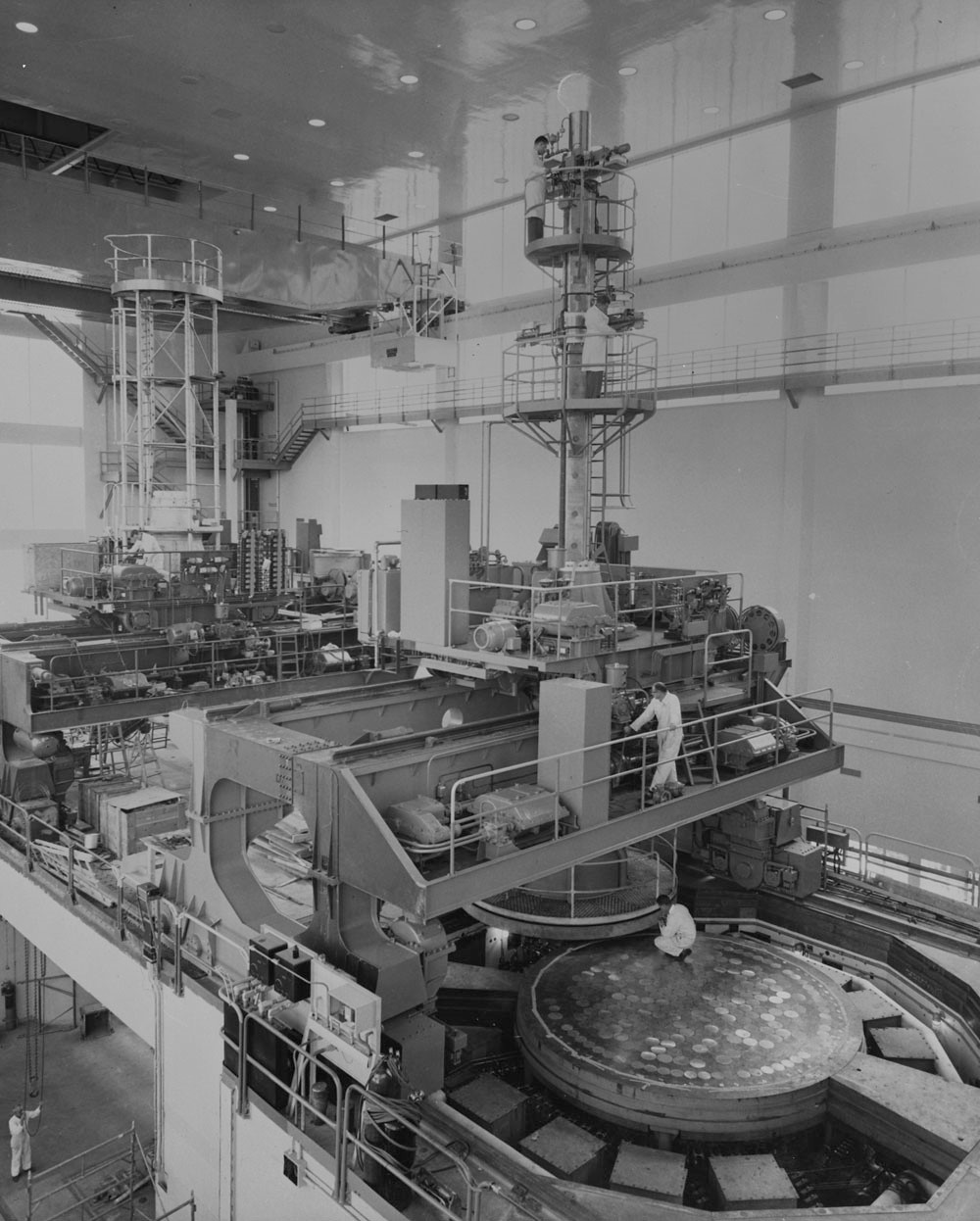
Written by guest blogger Mahdi Khelfaoui.
Radioactive isotopes are used each year in several million medical procedures worldwide. For instance, iodine-131 is applied in the treatment of thyroid disease, iridium-192 in radiotherapy, and xenon-133 in lung imaging. Technetium-99 (Tc-99m) is the most commonly used isotope in nuclear medicine, being involved annually in more than 40 million nuclear imaging procedures worldwide. Tc-99m is extracted from another isotope, molybdenum-99 (Mo-99), which has long been primarily produced by the government-owned company Atomic Energy of Canada Limited (AECL) in its NRU (National Research Universal) reactor. Starting production in 1975, AECL met nearly 40% of the world demand for Mo-99, making it a central actor of the Tc-99m global supply chain.
This industrial activity had long been unknown to the general public, but it suddenly hit the headlines in December 2007, when the NRU was temporarily shut down for safety reasons. This unplanned interruption of production quickly created a global Mo-99 shortage and raised the risk of a major health crisis, referred to in the Canadian and international media as the “isotope crisis”. Before the NRU incident, AECL had been trying for several years to build two new reactors, called the MAPLEs (Multipurpose Applied Physics Lattice Experiment), to replace the aging NRU. However, late in their commissioning stage, AECL discovered technical flaws in both reactors. While in the process of fixing them, AECL suddenly decided to cancel the project in May 2008. The following year, Prime Minister Stephen Harper announced that Canada would completely withdraw from the Mo-99 business. AECL and the government justified their decisions by citing insurmountable engineering problems and overwhelming costs.
 The NRU reactor. Credit: Library and Archives Canada/National Film Board fonds/e011176706
The NRU reactor. Credit: Library and Archives Canada/National Film Board fonds/e011176706However, as I show in my PhD thesis, the “isotope crisis” had deeper historical roots, since the NRU and MAPLE situations resulted largely from political and commercial decisions that had undermined the Canadian isotope industry over the previous 30 years. Indeed, one of the main reasons behind AECL’s withdrawal from the Mo-99 business lie in a government decision that had a lasting impact on the economic structure of the Canadian isotopes industry. In 1991, the Mulroney government sold the Radiochemical Company (RCC), the subsidiary of AECL responsible for the processing and sale of medical isotopes, to MDS Health, a Toronto-based medical company, which renamed it MDS Nordion.
This decision was couched as a pragmatic one, as it was supposed to allow the RCC to realize its full commercial potential in the hands of a private owner. But contrary to what the government’s rhetoric suggested, privatizing the RCC did not put an end to public spending in the medical isotopes business. On the contrary, the costs associated with the operation and maintenance of the NRU, as well as the management of the radioactive waste stemming from the production of Mo-99, remained AECL’s burden. Moreover, the new revenue sharing agreement was largely in favor of MDS Nordion, to which AECL was tied by an exclusive 25-year supply contract.
The new business relationship established between AECL and MDS Nordion deprived the Crown corporation of significant revenues, which would have otherwise allowed it to better finance and maintain its isotopes production infrastructures in the decades that followed. The study of the RCC privatization process, which I explore here in detail, provides an account of the institutional mechanisms that were at play during the application of the Progressive Conservatives’ divestiture policy in the 1980s, and explains how the partial privatization of Canada’s isotopes industry was designed to generate public costs and private profits.
Mahdi Khelfaoui is a SSHRC postdoctoral fellow at the University of Ottawa, member of the Jarislowsky Chair in Public Sector Management, and adjunct professor at the Centre interuniversitaire de recherche sur la science et la technologie. He is currently studying the impacts of the privatization of state-owned enterprises in different industrial sectors under Brian Mulroney’s two Progressive Conservative governments.
His latest article in the Canadian Historical Review entitled “Selling off the Crown Jewels: Socialization of Costs and Privatization of Profits in the Canadian Isotopes Industry” is free to read for a limited time here.
The UTP Journals blog features guest posts from our authors. The opinions expressed in these posts may not necessarily represent those of UTP Journals and their clients.
Comments on this entry are closed.